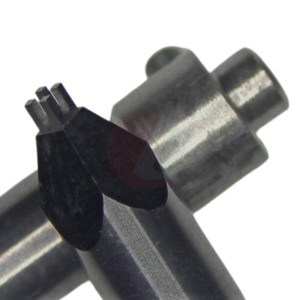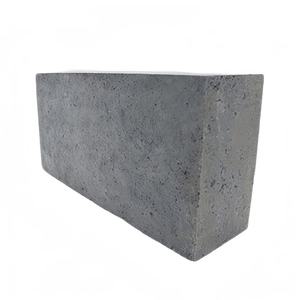Professional industry ceramic supplier, silicon nitride, silicon carbide, aluminum nitride and any other kinds of ceramics.
PRODUCT PARAMETERS
Description
Overview of Ultra-Lightweight Sic Ceramic Silicon Carbide Ceramic Parts
Ultra-Lightweight Sic Ceramic Silicon Carbide Ceramic Parts ceramics are a class of ultra-high-performance materials known for their exceptional thermal conductivity, outstanding mechanical properties, and superior chemical stability. They excel in the most demanding environments involving extreme temperatures, wear, and corrosive agents. This combination of properties makes SiC ceramics indispensable for advanced applications in aerospace, energy, automotive, and industrial processing.
Features of Ultra-Lightweight Sic Ceramic Silicon Carbide Ceramic Parts
-
Exceptional Thermal Conductivity: Facilitates excellent heat dissipation, outperforming many metals and most other ceramics.
-
High-Temperature Strength: Maintains remarkable mechanical strength and creep resistance at temperatures up to 1650°C.
-
Superior Wear & Abrasion Resistance: Offers extreme hardness, making it ideal for wear-prone components like seals, nozzles, and liners.
-
Excellent Chemical Inertness: Highly resistant to oxidation and attack by acids, alkalis, and molten metals.
-
High Thermal Shock Resistance: Withstands rapid temperature changes without cracking or degrading.
-
Semiconductor Properties: Used extensively in high-power, high-frequency electronic devices.
Specification of Ultra-Lightweight Sic Ceramic Silicon Carbide Ceramic Parts
Ultra-Lightweight SiC Ceramic parts are special. They are made from silicon carbide. This material is really solid. It is likewise really light. This mix is rare. Several products are either strong or light. SiC ceramic is both. This makes it beneficial for lots of usages.
These parts do not evaluate much. They are much lighter than steel. They are lighter than aluminum too. This reduced weight assists in saving power. Equipments making use of these components need much less power. Moving parts is less complicated. This is important for lorries and airplane.
The strength is impressive. SiC ceramic withstands damaging under pressure. It takes care of heavy loads well. It does not flex quickly. This stamina lasts a long period of time. The material does not break promptly. Parts last much longer. This decreases substitute prices.
Heats are no problem. SiC ceramic keeps steady when warm. It does not melt or deteriorate. Various other products may fail. This makes it best for engines and turbines. It functions well near intense heat.
Rust is not an issue. SiC ceramic battle chemicals. Acids and bases do not harm it. It endures harsh environments. This benefits chemical plants. It is additionally great for aquatic applications.
Electric residential properties are useful. SiC ceramic conducts electrical energy well under particular problems. It can be utilized in electronic devices. It helps manage warmth in chips. This improves gadget performance.
Many sectors advantage. Aerospace uses it for lighter, stronger elements. Automotive uses it for better engine components. Semiconductor producing relies upon it. Chemical processing requires its longevity. These parts supply a genuine benefit. They offer stamina without the weight charge.
Applications of Ultra-Lightweight Sic Ceramic Silicon Carbide Ceramic Parts
Ultra-lightweight silicon carbide ceramic components are exceptionally solid yet really light. This special mix makes them perfect for requiring applications. Aerospace engineers enjoy them. These porcelains manage severe warmth and stress and anxiety well. They are optimal for aircraft structural elements. They shield delicate systems from high temperatures also. Their low weight helps improve gas performance substantially.
The automotive market makes use of these porcelains also. They are key in high-performance brake systems. They last much longer than standard materials. Engine parts take advantage of their warmth resistance. Components see less damage. This leads to better engine life. Electric cars use them in battery thermal monitoring. This keeps batteries secure and efficient.
Power manufacturing depends on these innovative porcelains. They work well in warm exchangers for power plants. Their security at heats is important. Nuclear applications use them for their radiation resistance. They aid manage warmth safely. Solar power systems use them in focusing receivers. They absorb and move solar power properly.
Electronics require products that take care of heat. Silicon carbide succeeds here. It works as a substratum for high-power chips. It pulls warmth away successfully. This avoids getting too hot and damage. Digital tools remain cooler and execute much better.
Chemical plants deal with extreme environments. Ultra-lightweight SiC porcelains resist rust. They stand up to strong acids and bases. They are excellent for pumps, shutoffs, and activators. They last longer under chemical strike.
Medical innovation finds usages for this product. Its biocompatibility is outstanding. It functions well in particular implants. Surgical devices made from it are resilient and exact. It satisfies stringent clinical standards.
Company Profile
Tanki New Materials Co.Ltd. focus on the research and development, production and sales of ceramic products, serving the electronics, ceramics, chemical and other industries. Since its establishment in 2015, the company has been committed to providing customers with the best products and services, and has become a leader in the industry through continuous technological innovation and strict quality management.
Our products includes but not limited to Aerogel, Aluminum Nitride, Aluminum Oxide, Boron Carbide, Boron Nitride, Ceramic Crucible, Ceramic Fiber, Quartz Product, Refractory Material, Silicon Carbide, Silicon Nitride, ect. please feel free to contact us.

Payment Methods
T/T, Western Union, Paypal, Credit Card etc.
Shipment Methods
By air, by sea, by express, as customers request.
5 FAQs of Ultra-Lightweight Sic Ceramic Silicon Carbide Ceramic Parts
What are ultra-lightweight SiC ceramic parts? These parts are made from silicon carbide ceramic. They are very strong. They are also very light. This makes them different from regular ceramics. Regular ceramics are often heavy. SiC ceramics offer a great strength-to-weight ratio. This is important for many uses.
Why is lightweight so important? Weight matters a lot in many industries. Saving weight improves efficiency. It reduces fuel use in vehicles. It allows faster movement in machinery. Lightweight parts put less stress on other components. This helps things last longer. SiC ceramics provide strength without the bulk.
How do they handle heat? These parts are excellent with heat. They resist very high temperatures. They stay stable even when hot. They don’t expand much when heated. This is called low thermal expansion. Other materials might warp or fail under heat. SiC ceramics keep their shape and strength. This makes them perfect for hot environments.
Where are these parts used? You find them in demanding places. They are common in aerospace and defense. They are used in high-performance brakes. They go into jet engines and turbines. They work well in heat exchangers. They are found in semiconductor manufacturing tools. Anywhere weight savings and heat resistance are critical, they are a good choice.
Why are they so durable? Silicon carbide is very hard. It is almost as hard as diamond. This hardness makes it resistant to wear. It doesn’t scratch or wear down easily. It also resists corrosion from chemicals. It handles harsh conditions well. This toughness means parts last a long time. They need replacing less often.
REQUEST A QUOTE
RELATED PRODUCTS

Silicon Carbide Sic Ceramic Precision Machined Positioning Block
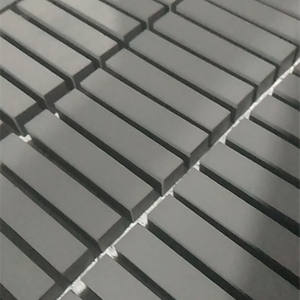
High Wear Resistance Silicon Carbide Ceramic Parts

50mm 75mm 2″ 3” Tr/Ts Aluminum Oxide Ceramic Zirconia Alumina Silicon Carbide Quick Change Discs for Cleaning Polishing Surface Condition Customized
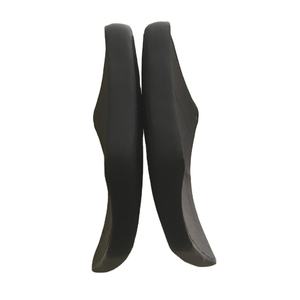
Super High Hardness Insulating Component Silicon Carbide Ceramic
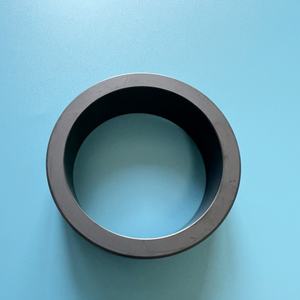
High-Purity Silicon Carbide Semiconductor Silicon Ceramic Components
